We may earn revenue from the products available on this page and participate in affiliate programs. Learn More ›
Trees not only improve the beauty of our landscapes, but they provide a critical function for our health, too. These leafy lovlies remove carbon dioxide from the air, and give us life-critical oxygen in return. Many of us are improving our carbon footprint by growing trees, but it’s important to learn how to plant a tree correctly so that it will flourish.
Tools & Materials
Bobvila.com may earn a commission from purchases made through these links.
Project Overview
Working Time: 1 hour
Total Time: 1 hour
Skill Level: Beginner
Estimated Cost: Assuming you have the gardening tools, you might spend $25 on stakes, straps, and mulch. The cost of the tree can vary widely, of course.
How to Plant a Tree in 7 Steps
If you’ve been thinking about planting trees on your property, you’ll want to learn how to do it properly to ensure success. And while tree planting is probably not on one’s list of fun ways to spend an afternoon, you’ll be glad you took the time to do it right when your tree rewards you with beauty, shade, and maybe even some fruit!
Step 1: Dig the planting hole.
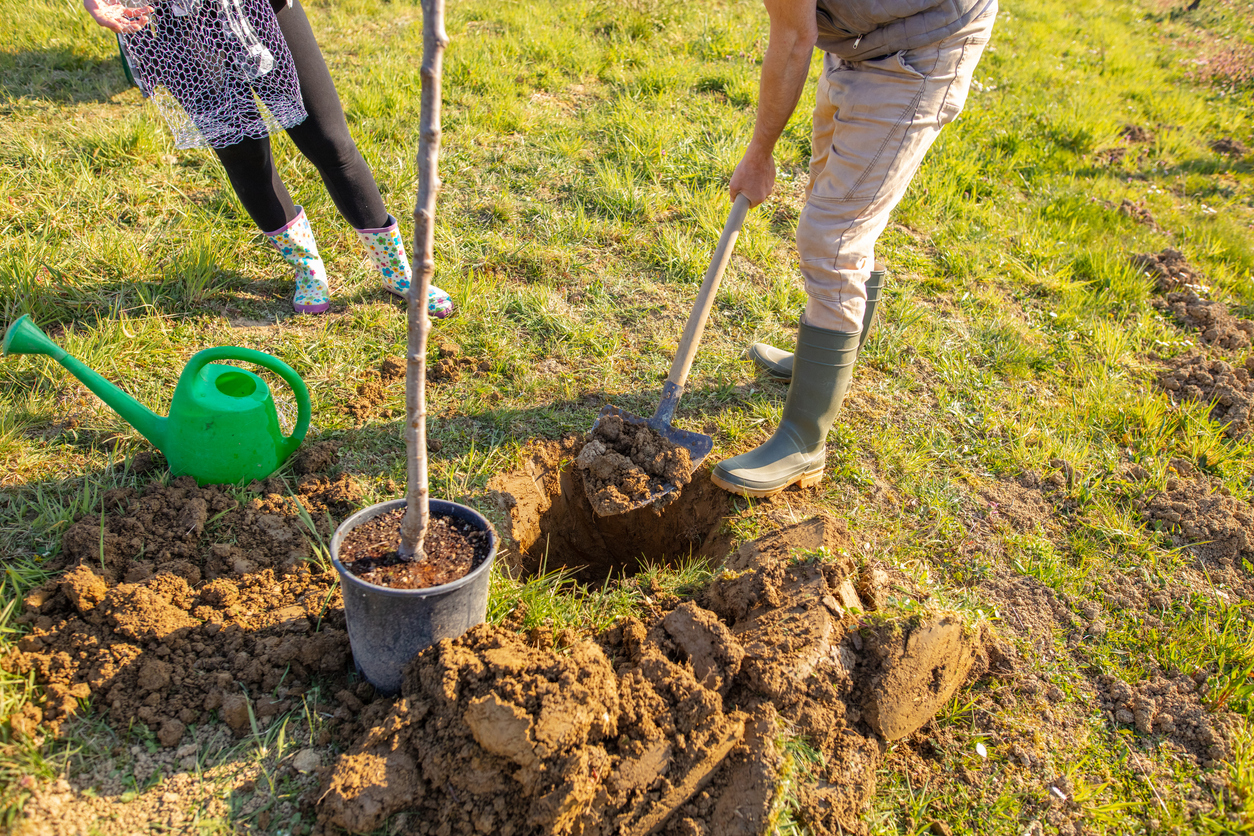
Dig a hole that is two to three times wider than the root ball of the tree you’re planting. Make the hole the same depth as the root ball, being sure that your hole isn’t so deep that the trunk flare (also called root flare) will be completely buried. This is at the very bottom of the trunk, where it flares out a bit and transitions to roots.
Make sure your hole is the correct depth by placing the root ball in the hole and laying your shovel handle across the width of the hole. This helps you to see where the top of the root ball is in relation to the height of the hole, or the ground level.
RELATED: The 12 Best Trees for Front-Yard Landscaping
Step 2: Inspect the roots.

Upon removing the tree from its container, whether a plastic pot, burlap sack, or other, inspect the roots. If the tree was rootbound in its container, you will see a tight, circular pattern of roots. Break that up by using your hands to gently loosen and straighten the roots. You might have to cut tightly wound roots, root by root. Alternatively, you can cut an X into the bottom of the root ball, and cut vertical slices up the sides of the root ball.
As to how to plant a bare root tree, soak the roots in water for at least an hour before planting. Spread the roots out to encourage outward growth. This important step for bare root or potted trees will free roots up to grow outward instead of around the root ball and encourages new roots to grow.
Step 3: Set the tree in its new hole.
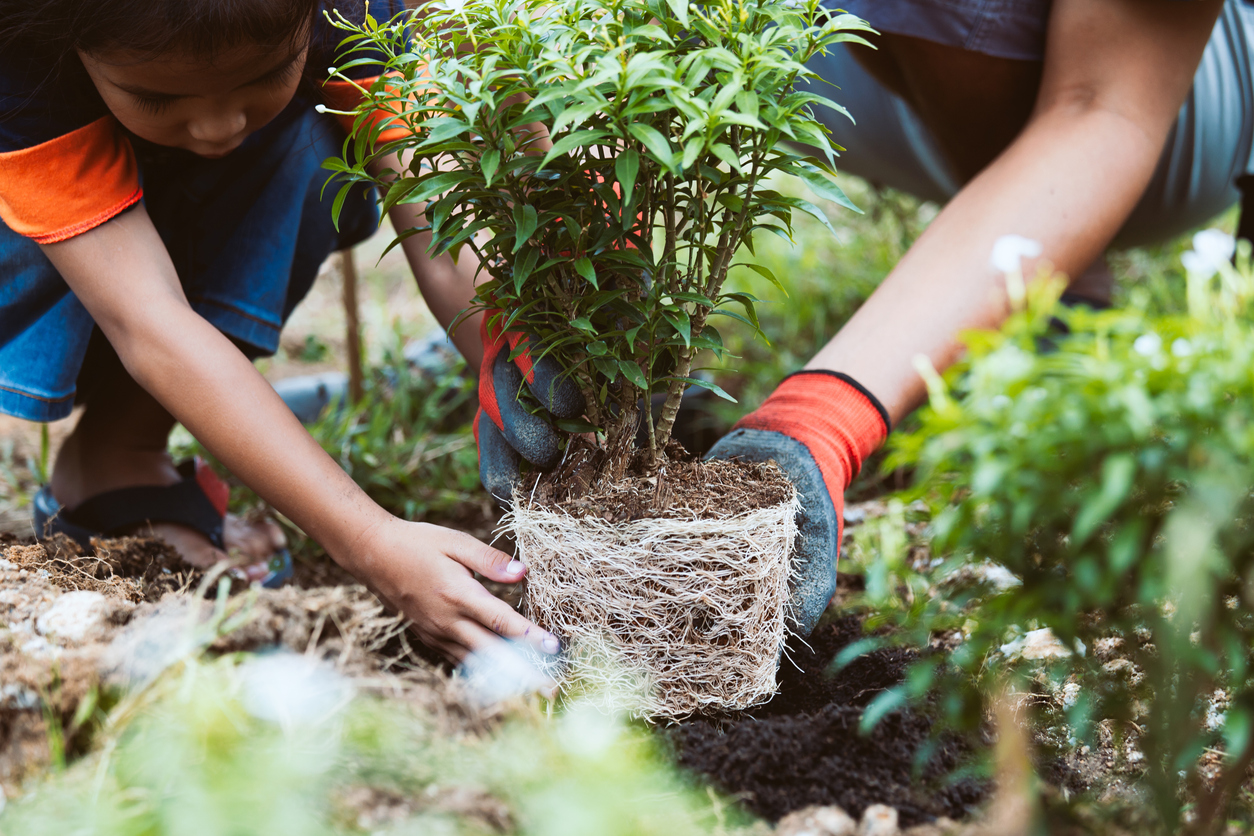
Place the tree in its hole, lifting it by the root ball. Double-check to make sure the root flare is visible above ground level. Check and recheck that the tree is straight. Walk around the tree, looking at it from different angles.
RELATED: The 15 Best Trees for Any Backyard
Step 4: Backfill the hole.
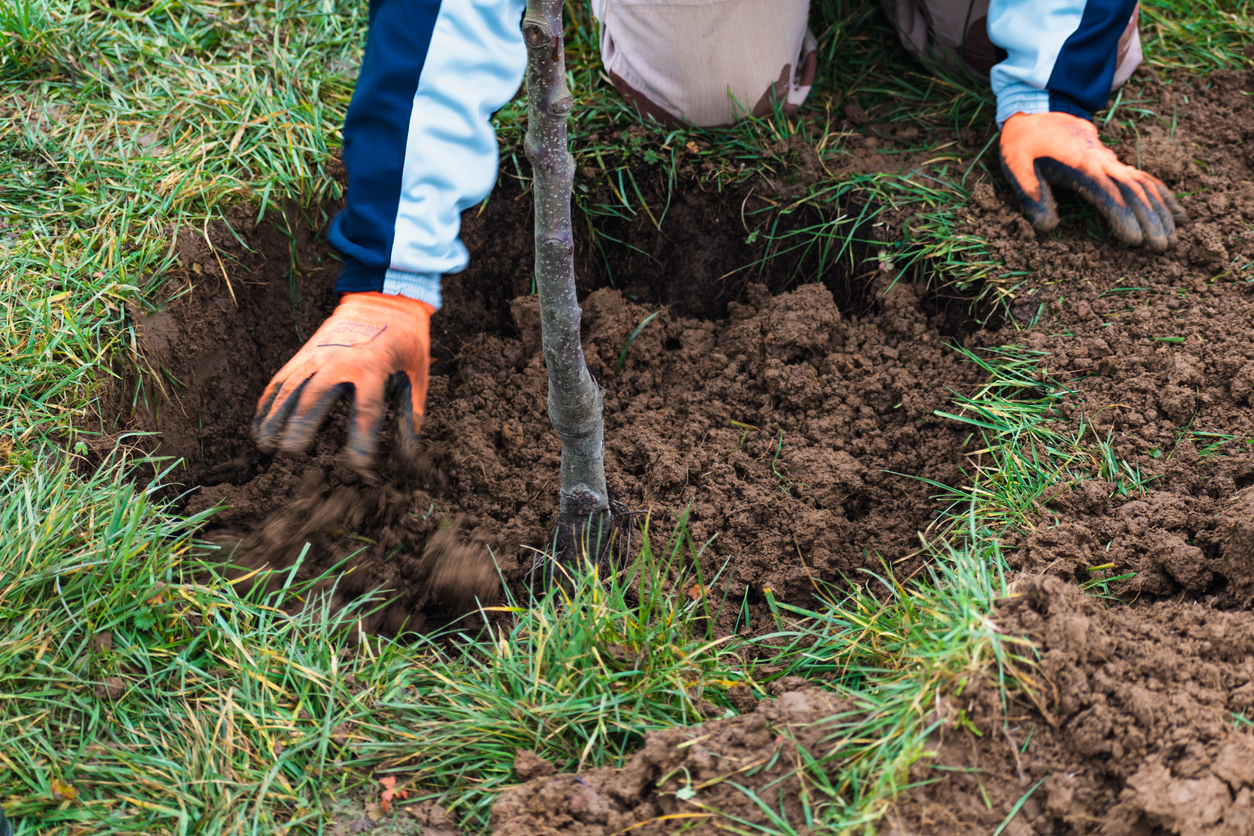
Fill the hole using the same dirt you dug out. Don’t amend the soil with compost or fertilizer because the tree won’t send roots out into the native soil if you give it yummy soil right up close, and this results in a weaker tree. You do want to break up large clumps and remove rocks. Tamp down the soil occasionally as you fill to eliminate air pockets.
Step 5: Add mulch.
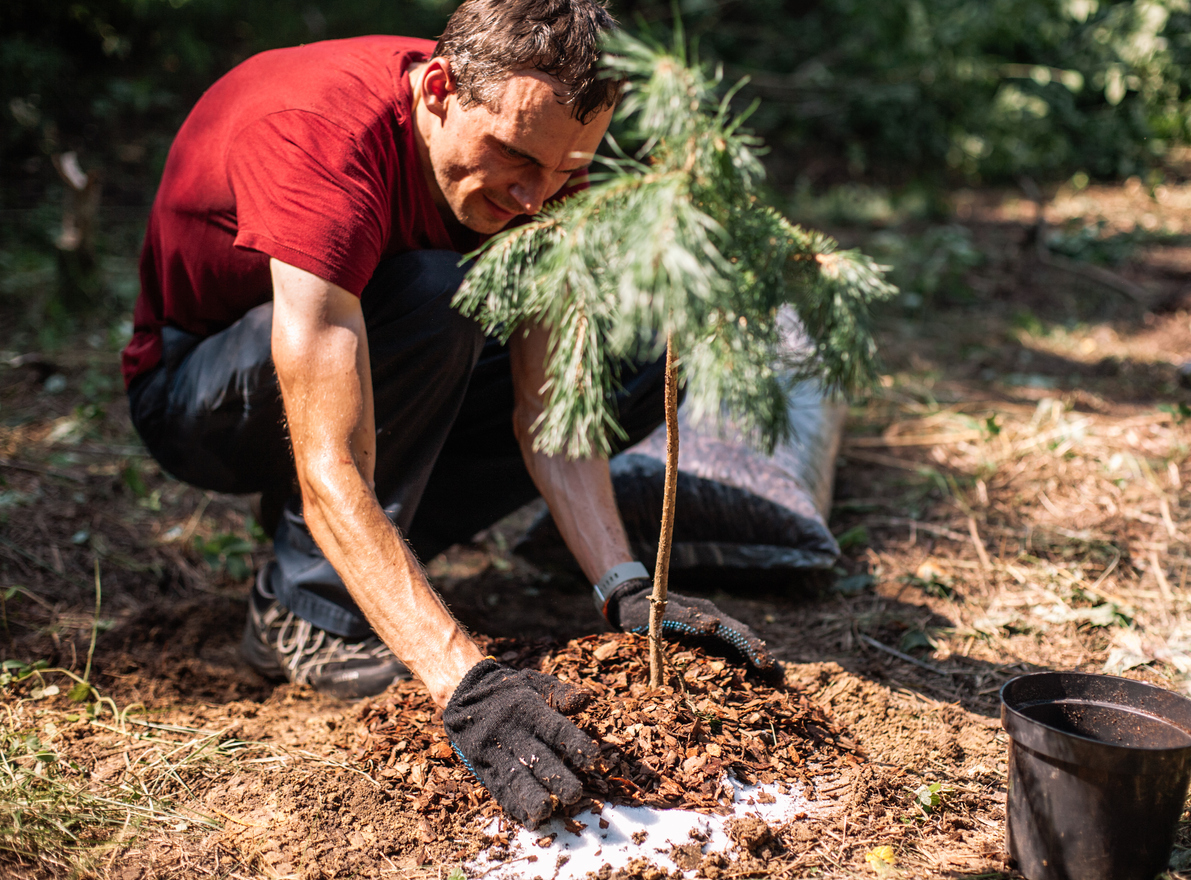
Add a “ring” of mulch around the tree, but not right up to the tree trunk. The layer of mulch should be 3 to 4 inches deep. Start the mulch ring 6 inches or so away from the trunk, and bring the mulch out to about 4 feet in diameter around the tree.
RELATED: 11 Pro Tips for Strategically Planting Trees on Your Property
Step 6: Stake the tree, if necessary.
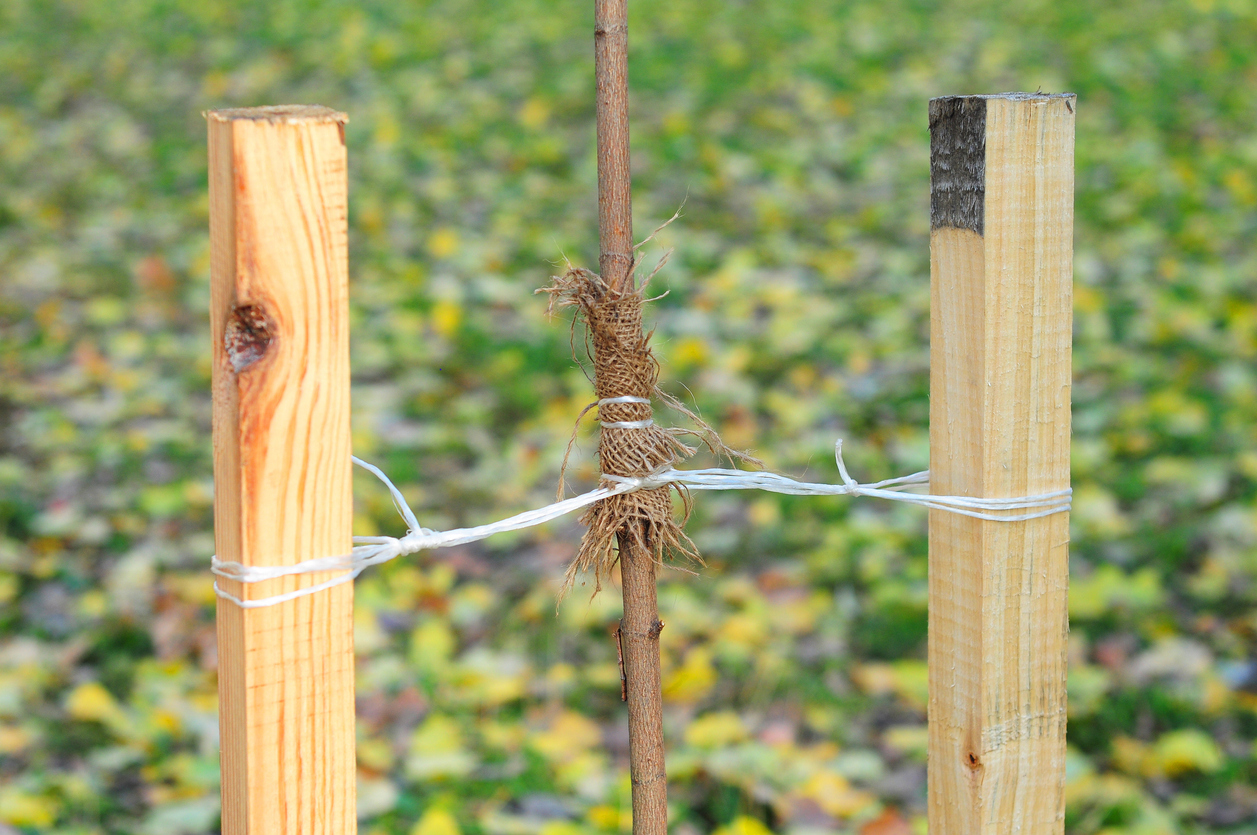
Most trees don’t need staking, but some do: If the tree has a narrow trunk, was sold as bare root, or is being planted in a windy area, stake it. Drive into the ground two 4-foot stakes on opposite sides of the tree, outside of the root zone. Use a cloth strap or soft rubber tubing to loop around the tree trunk to the stakes. Don’t pull the straps too tight. Remove any ties on the tree after a year.
Step 7: Properly water the tree.
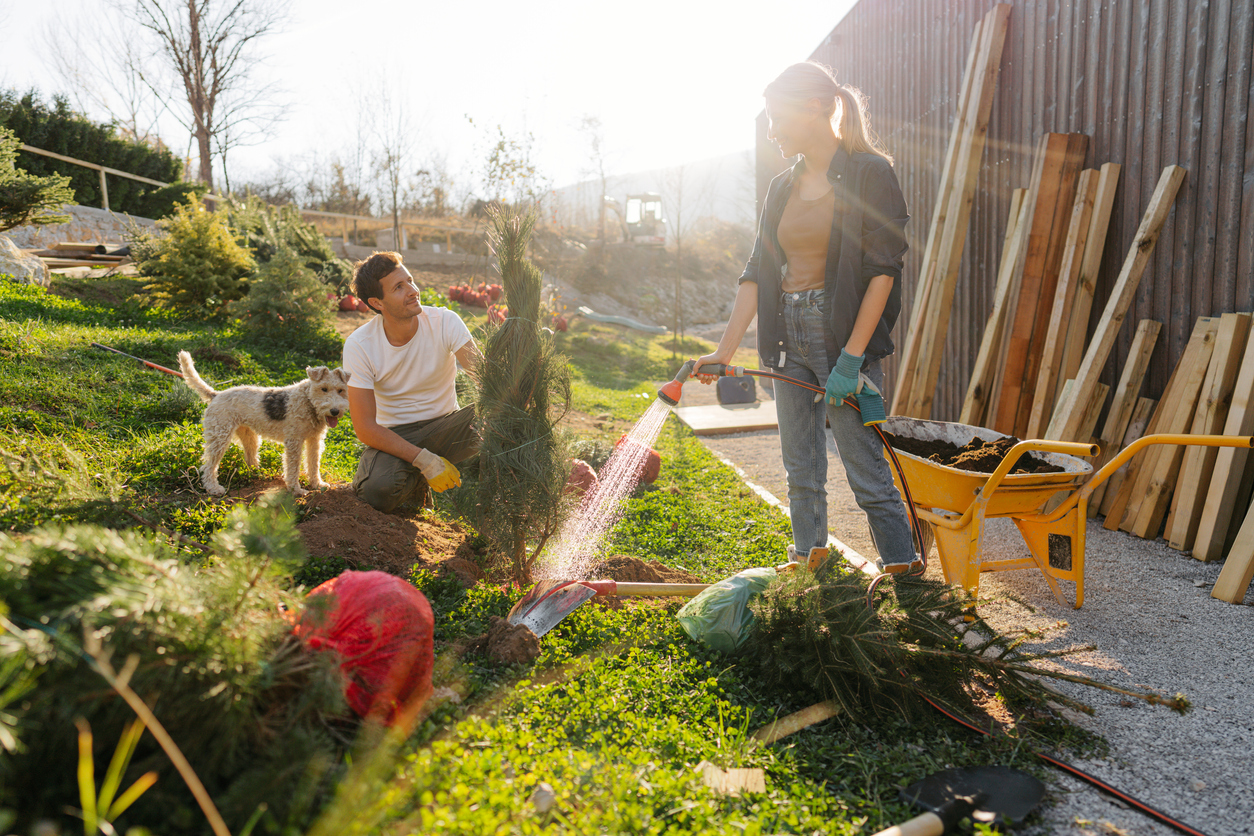
Water a newly planted tree slowly and near the root ball after planting. For the first year, keep the soil around a new tree moist. Water deeply about once a week, more in very hot and dry weather or soil that drains quickly. As the tree becomes established, you can cut back on watering. Assuming you planted a native or adapted tree, it eventually will need supplemental watering only in cases of drought. Other watering needs will vary based on tree type, soil conditions, and weather.
RELATED: The Dos and Don’ts of Landscaping Around Trees
FAQs
Assuming you are doing the work yourself and already own a shovel, the cost to plant a tree would be limited to the price of the tree itself, plus the costs of the stakes, if needed, and strap material. If the soil is rocky where you live, you may need to invest in a pickaxe (about $40) to help with the digging process. Also add in the cost for a 3- to 4-inch layer of mulch about 4 feet out around the tree.
Wondering when to plant a tree? In most areas of the country, the best time to plant a tree is in early spring. In some areas, late winter also works, and fall is acceptable, but the selection of trees tends to be lower in fall.
Plant a tree in a place that will complement your landscape but not interfere with structures. Don’t plant a tree too close to your house, for example, and don’t plant one underneath power lines.
Using a sharp and clean cutting tool, first cut out any deadwood. Then look for areas where the limbs/branches are extremely dense, and trim out the excess. Stand back and see where your tree could use some trimming to improve its balance and overall appearance. Don’t remove any of the tree’s primary branches.
When deciding what kind of tree to plant, the first consideration is to determine which trees do well in your area. Then, think about the benefit you hope to gain from the tree—fruit, flowers, or autumn interest, for example. How much work do you want to put into maintaining your tree? Also consider size; do you need a huge tree or a smaller, specimen tree?
Final Thoughts
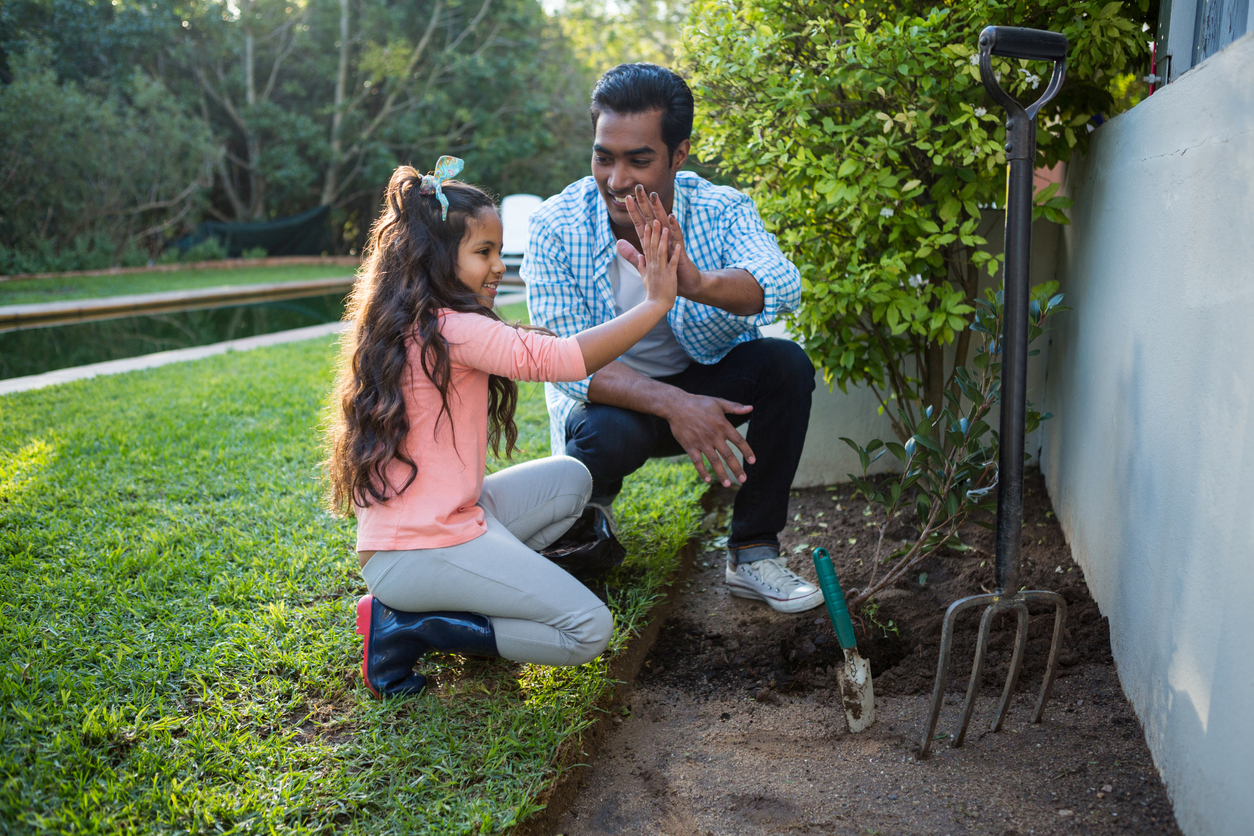
While you might be in a hurry to plant a tree so you can move on to another project, give your tree its best shot at success by taking your time with each step in the tree-planting process. This means putting forth the effort of digging a large enough hole, carefully positioning the tree in the hole, backfilling, mulching, and watering. A tree will reward careful planting with a long life of giving back to our environment, beautifying your landscape, and supporting wildlife. Check our articles on the best trees for the backyard and the best dwarf trees for the front yard for inspiration!


